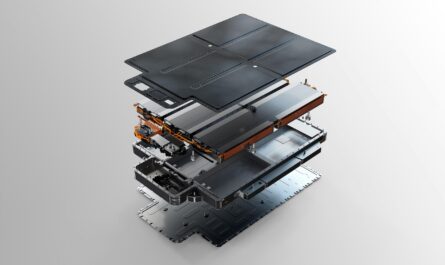Distributed Generation – An Alternative to Centralized Power Systems
Traditionally, power generation has been managed through large, centralized power plants connected to power transmission and distribution systems stretching across vast areas. However, in recent years distributed generation has emerged as a viable alternative model for power production. Distributed generation refers to small-scale power generation technologies installed close to the end user. By being located on-site or close to locations of consumption, distributed generation aims to supplement or replace conventional power from centralized systems. Let us explore the concept, technologies and advantages of distributed generation in detail.
Types of Distributed Generation Technologies
Distributed generation utilizes various renewable and non-renewable energy sources on a small scale. Some major technologies used for distributed generation include:
- Solar Photovoltaic Systems: Rooftop solar PV systems are increasingly being installed at homes, businesses and industries to generate electricity from sunlight. Advances in solar panel efficiency and lower costs have made solar PV a popular distributed energy option.
- Fuel Cells: Fuel cells use an electrochemical process to combine hydrogen and oxygen to generate electricity with heat and water as byproducts. They offer clean, reliable power especially for off-grid applications. Various fuel sources like natural gas, biogas or hydrogen can be used.
- Microturbines: Similar to larger gas turbines, microturbines run on renewable and non-renewable fuels to generate electricity through combustion. Their compact size makes them suitable for distributed applications requiring less than 250 kW power.
- Small Wind Turbines: Small wind turbines capable of generating up to 100 kW power are being deployed as distributed generation sources, particularly in regions with good wind resources. Advances are being made to improve design and efficiency at small scales.
- CHP Systems: Combined Heat and Power or cogeneration systems produce both electricity and useful thermal energy in an integrated process. Natural gas, biomass or biogas fired CHP systems are commonly used for distributed power combined with heating/cooling applications.
- Diesel Generators: Backup diesel generators are a conventional non-renewable distributed generation technology primarily used as a reliable emergency power source. However, their efficiency and emissions can be improved.
- Energy Storage: Storage technologies like lithium-ion batteries play an important role in distributed generation by storing intermittent renewable power for use when required or during grid outages. They improve economics and reliability.
Benefits of Distributed Generation
The key drivers making distributed generation an attractive proposition are outlined below:
- Reliability and Resiliency: By having generation near load centers, distributed resources improve reliability of supply and help deliver uninterrupted power during outages or disasters affecting the main grid infrastructure. This resilient “islandable” ability is invaluable.
- Decongestion of Grids: Widespread deployment of distributed generation helps reduce congestion on existing transmission and distribution networks by offsetting local power requirements. This defers costly grid upgrades.
- Environmental Sustainability: Most distributed technologies are clean, green and carbon-free compared to conventional sources, thereby reducing emissions. Fossil fuel consumption by centralized plants is also lowered. Renewable microgrids further boost sustainability.
- Economic Viability: Distributed generation brings multiple economic benefits through avoided transmission costs, improved reliability lowering costs of power outages, and revenue from selling surplus power to the grid. Payback periods are reducing rapidly.
- Energy Democracy: Empowering local communities and prosumers with control over their energy resources promotes energy access, self-reliance, sustainability and local economic development. Knowledge transfer is another co-benefit.
Enabling Technologies like power electronics and intelligent control systems are enhancing efficiency, flexibility and smart integration of distributed energy within grids through functions like demand response and virtual power plants.
Challenges of Distributed Generation Systems
While distributed generation promises many advantages, certain challenges still need to be addressed by all stakeholders:
- Interconnection Issues: Technical and regulatory standards are required to safely interconnect distributed resources with grid voltages and frequency within approved limits without compromising reliability or cybersecurity.
- Higher initial costs: Upfront capital costs of distributed units tend to be greater than expanding centralized systems. However, total lifetime costs are reducing steadily with technology scaling. Financial viability assessments are crucial.
- Intermittency management: The variable and sometimes unpredictable nature of renewable sources like solar and wind requires effective forecasting, smart inverters, controls and storage to balance generation with fluctuating demand profiles.
- Lack of awareness: More awareness campaigns are required among common citizens, industry and policymakers about technical, economic and Environmental benefits of distributed power. Incentives and financing schemes can accelerate uptake.
- Skilled workforce: Large-scale adoption of distributed technologies would necessitate training current professionals and developing a dedicated workforce with expertise in renewable resource assessment, installation, commissioning, maintenance and control systems.
- Standardization of practices: Common operating procedures, performance benchmarks and safety standards are yet to mature for distributed generation market actors and technology providers across jurisdictions to engender best practices and inter-connectivity.
The Future of Distributed Generation
As costs fall and enabling factors are strengthened, distributed generation capacity worldwide is projected to grow significantly this decade and beyond. Advanced technologies and smart microgrids would take distributed power to the next level. With innovative business models, tailored policy support and involvement of all stakeholders, distributed generation holds immense promise to transform centralized fossil-based systems towards more decentralized, decarbonized and resilient grids of the future.
*Note:
1. Source: Coherent Market Insights, Public sources, Desk research
2. We have leveraged AI tools to mine information and compile it



